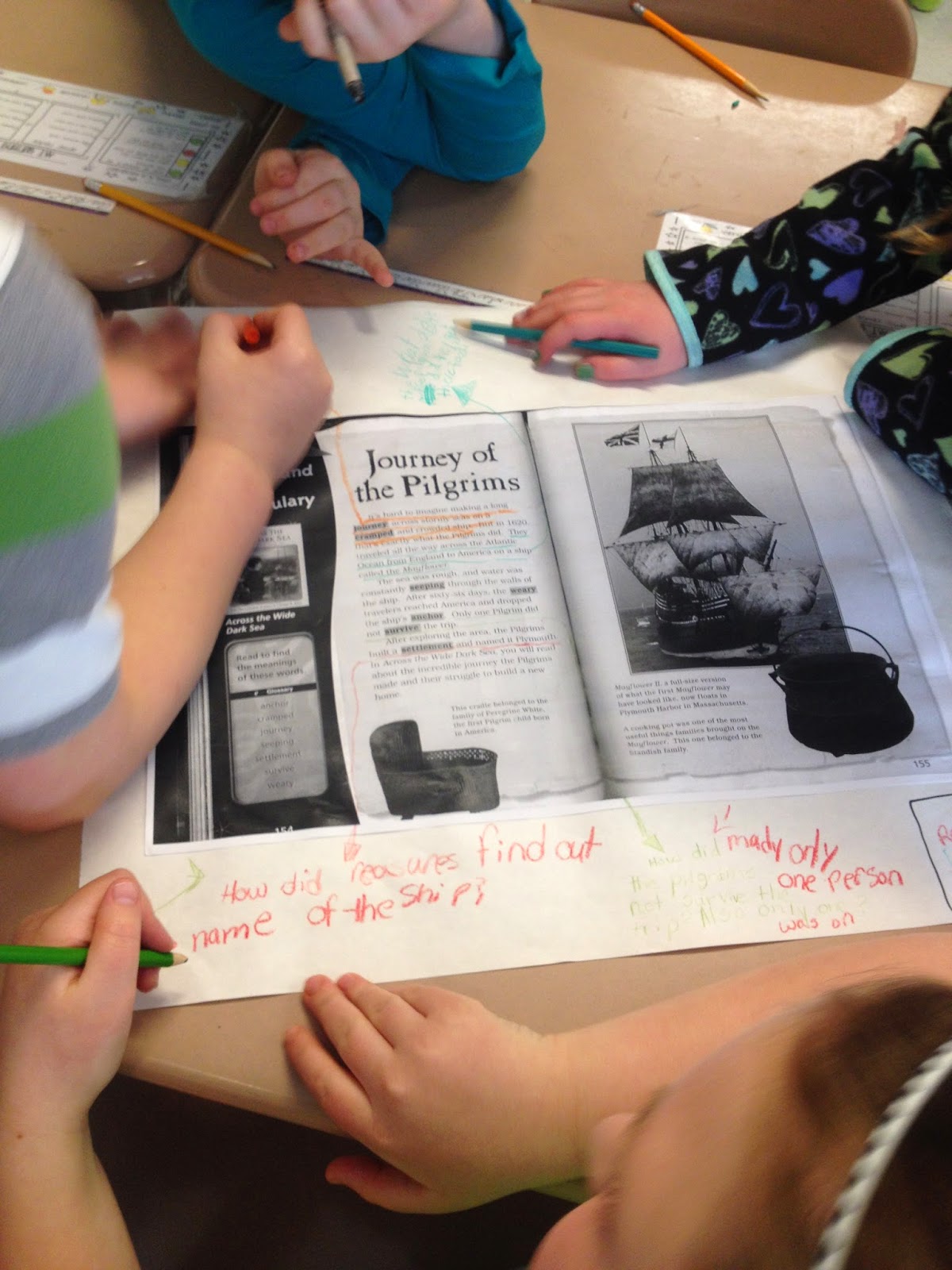Recently, in my grad class, I learned about text mapping, have you? If you haven't, it's pretty much like having a conversation with the text, either "talking" about something in particular or just anything. The teacher who modeled it for our class told us that we could write thoughts, connections, questions, basically whatever! Then my professor continued by saying we could use text mapping for a particular skill also. Well, I decided to give it a go in my own classroom, to see how third graders do it...
We have been reading about how pictures and illustrations help us as readers, so I thought I would connect how having a conversation with the text would do the same. My students were in groups of 6, which I later found out was WAY too many! The next time I did this activity, I made groups of 3, worked beautifully!
To prepare for text mapping, you need to photocopy part of a book or print whatever text you want the students to talk with. Then, glue the text on a larger sheet of paper, I just used butcher paper that we use for bulletin boards. When you teach your students how to text map, model first! I used our document camera to show first how to mark what I want to say, then what I want to say.
Send your kids off, each with a different color, to have their own
conversation! I walked around and wrote questions about their comments,
or gave an answer to one of their questions, or made a connection.
Go give text mapping a try, you'll be glad you did!
Happy Teaching!
~Beth


















